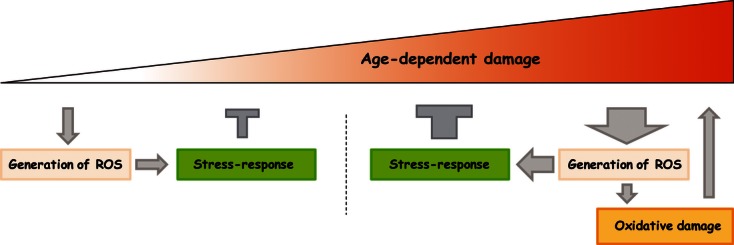Fig. 6.

The gradual reactive oxygen species (ROS) response hypothesis. Reactive oxygen species-independent age-related damage induces the production of ROS as part of a stress-response defence pathway (left). At this stage, toxicity is well controlled by the antioxidant system and is therefore not deleterious. ROS-independent damage accumulates with age and induces a progressive increase in ROS generation as the cell attempts to increase its stress response (right). The antioxidant system is overwhelmed by the increased amount of ROS, and ROS-induced damage will occur and contribute to the total increase in age-associated damage (right). ROS thus have a dual role in ageing: initially ROS promote signalling to prevent damage accumulation; later, ROS contribute to damage creation. Adapted from 7.
